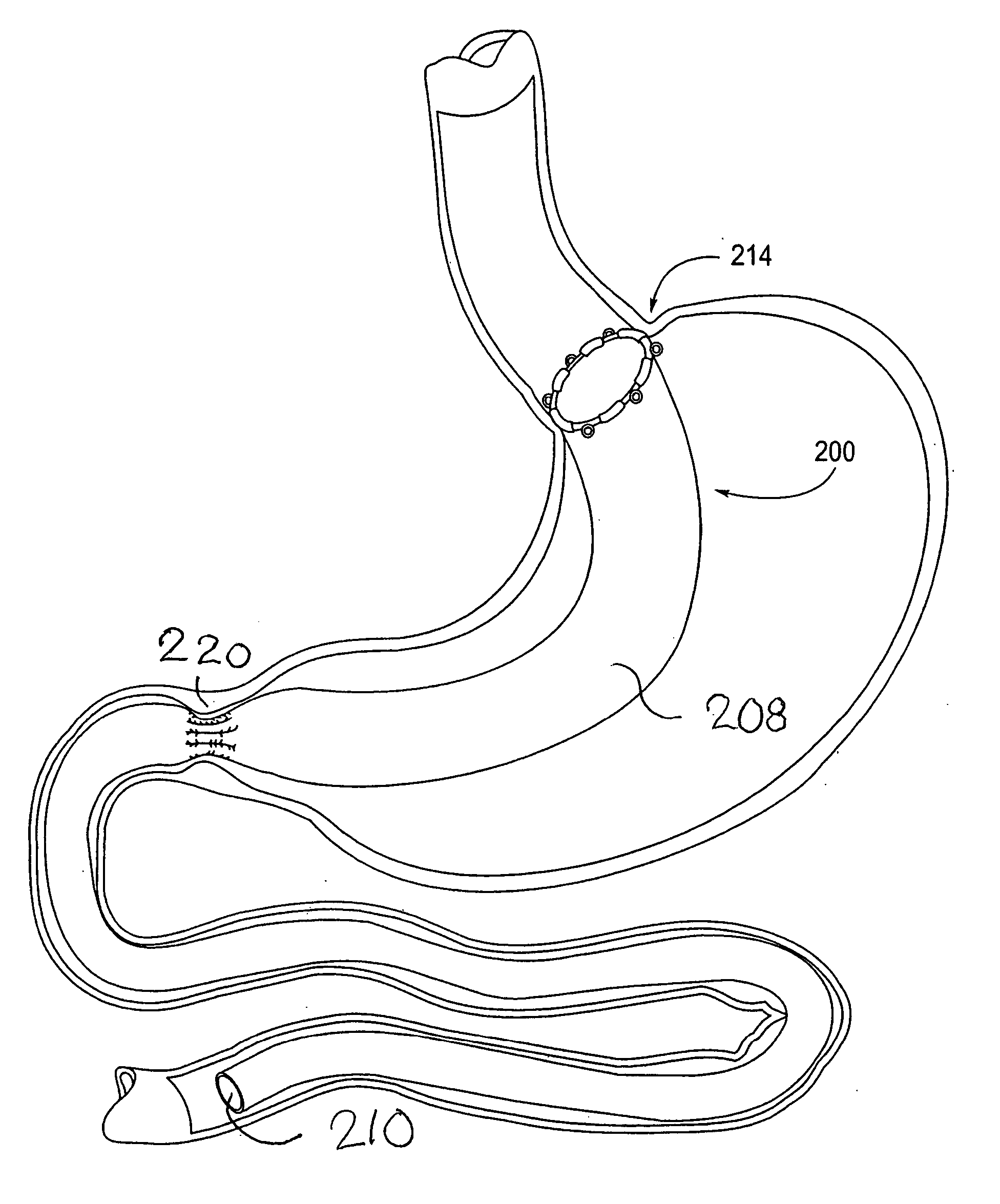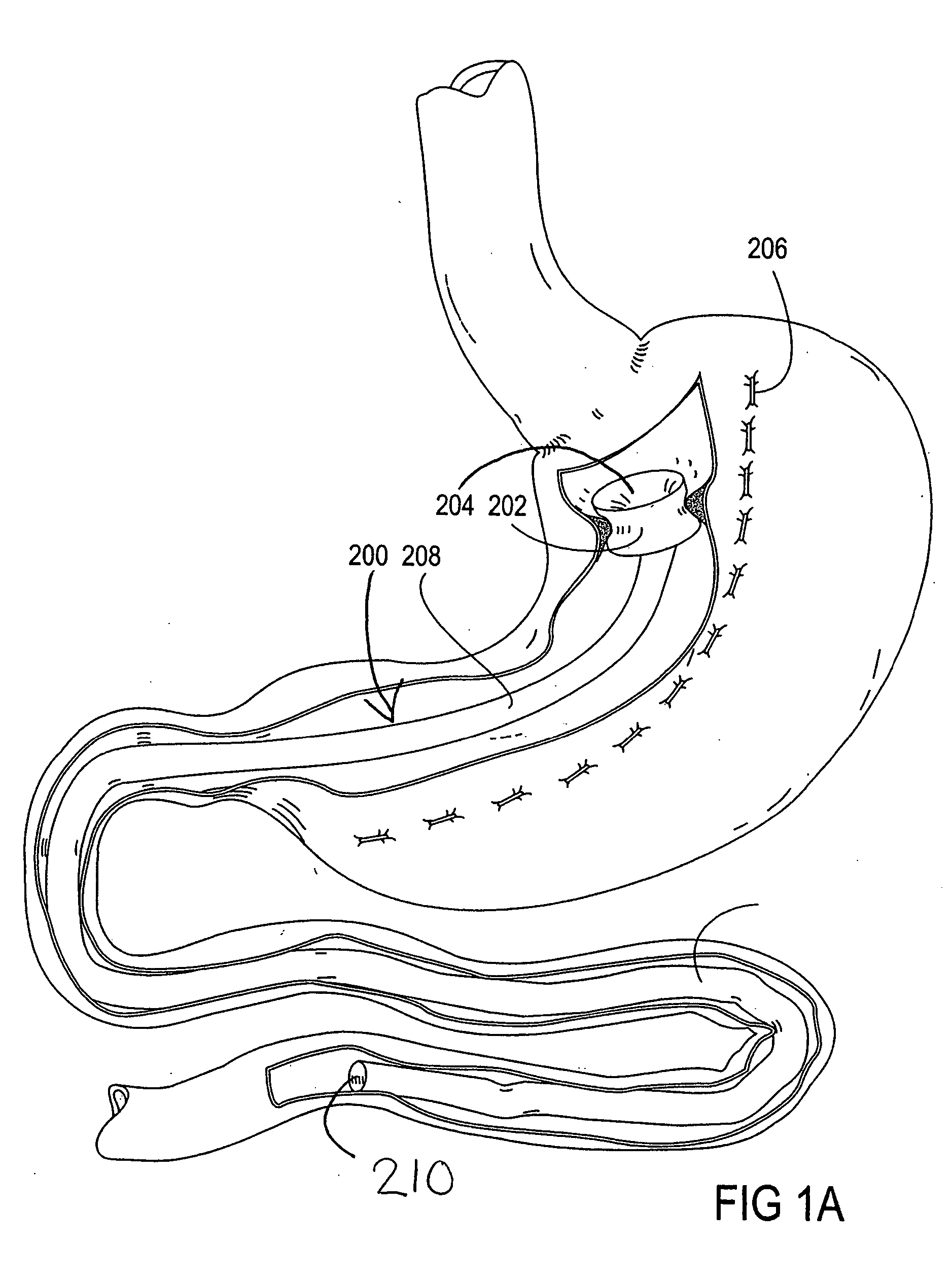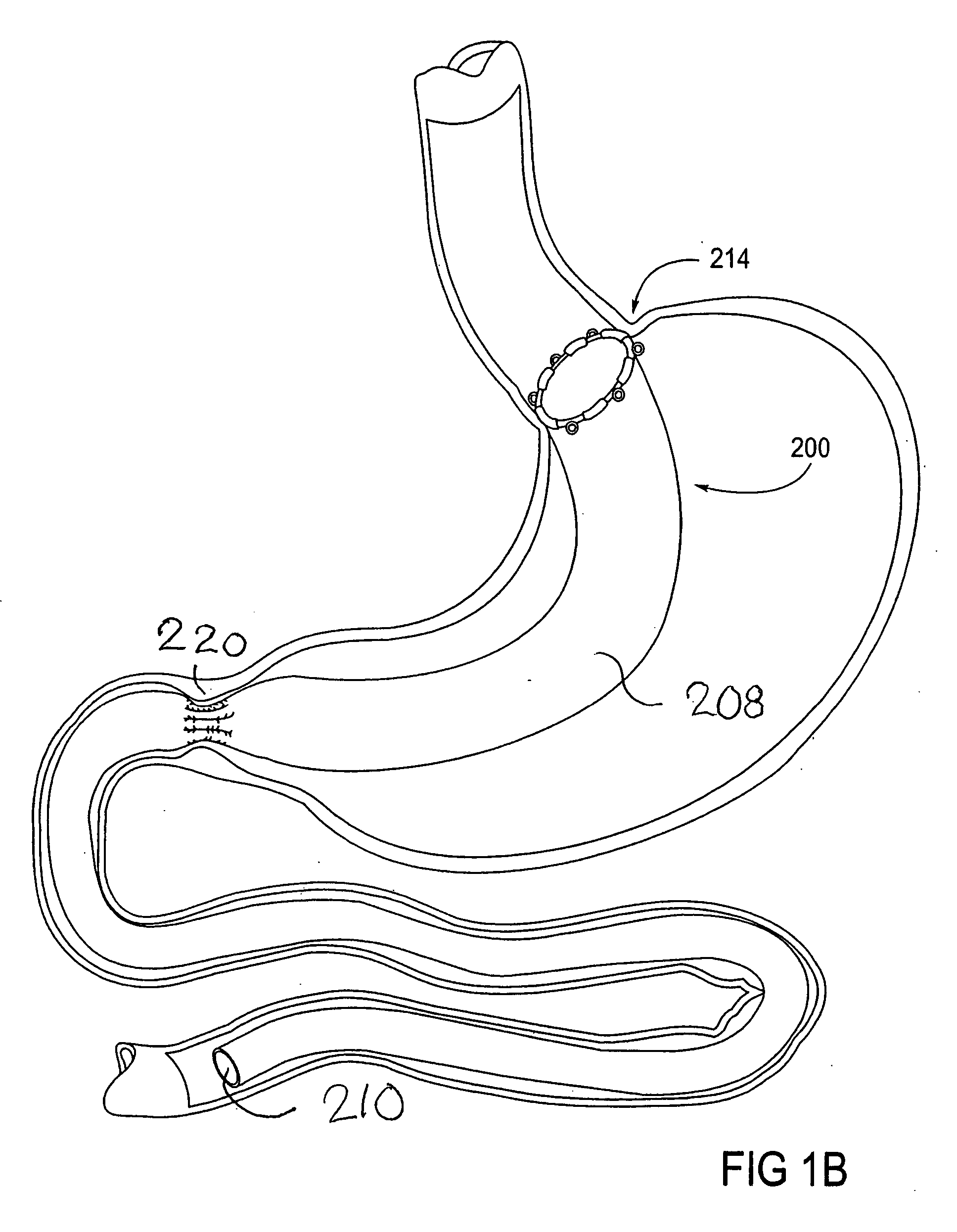Devices and methods for treating morbid obesity
- Summary
- Abstract
- Description
- Claims
- Application Information
AI Technical Summary
Benefits of technology
Problems solved by technology
Method used
Image
Examples
Embodiment Construction
[0065] The parent application, Ser. No. 10 / 698,148, describes gastrointestinal sleeve devices that can mimic a Roux-en-Y gastric bypass by effectively reducing stomach volume, bypassing a portion of the stomach and / or small intestines, reducing nutrient absorption in the stomach and / or small intestines and depositing minimally or undigested food farther than normal into the intestines, thereby stimulating intestinal responses. The gastrointesintal sleeve devices described therein are all adaptable for use with the apparatus and methods of the present invention. FIGS. 1A-1C show representative examples of such gastrointestinal sleeve devices.
[0066]FIG. 1A shows a gastrointestinal sleeve device 200 attached to an artificial stoma device 202 implanted within a patient's stomach. The artificial stoma device 202 can be implanted at the outlet of a surgically created gastric pouch to create a restriction that limits the volume of food that can be ingested at one time. The artificial stom...
PUM
 Login to View More
Login to View More Abstract
Description
Claims
Application Information
 Login to View More
Login to View More - R&D
- Intellectual Property
- Life Sciences
- Materials
- Tech Scout
- Unparalleled Data Quality
- Higher Quality Content
- 60% Fewer Hallucinations
Browse by: Latest US Patents, China's latest patents, Technical Efficacy Thesaurus, Application Domain, Technology Topic, Popular Technical Reports.
© 2025 PatSnap. All rights reserved.Legal|Privacy policy|Modern Slavery Act Transparency Statement|Sitemap|About US| Contact US: help@patsnap.com



